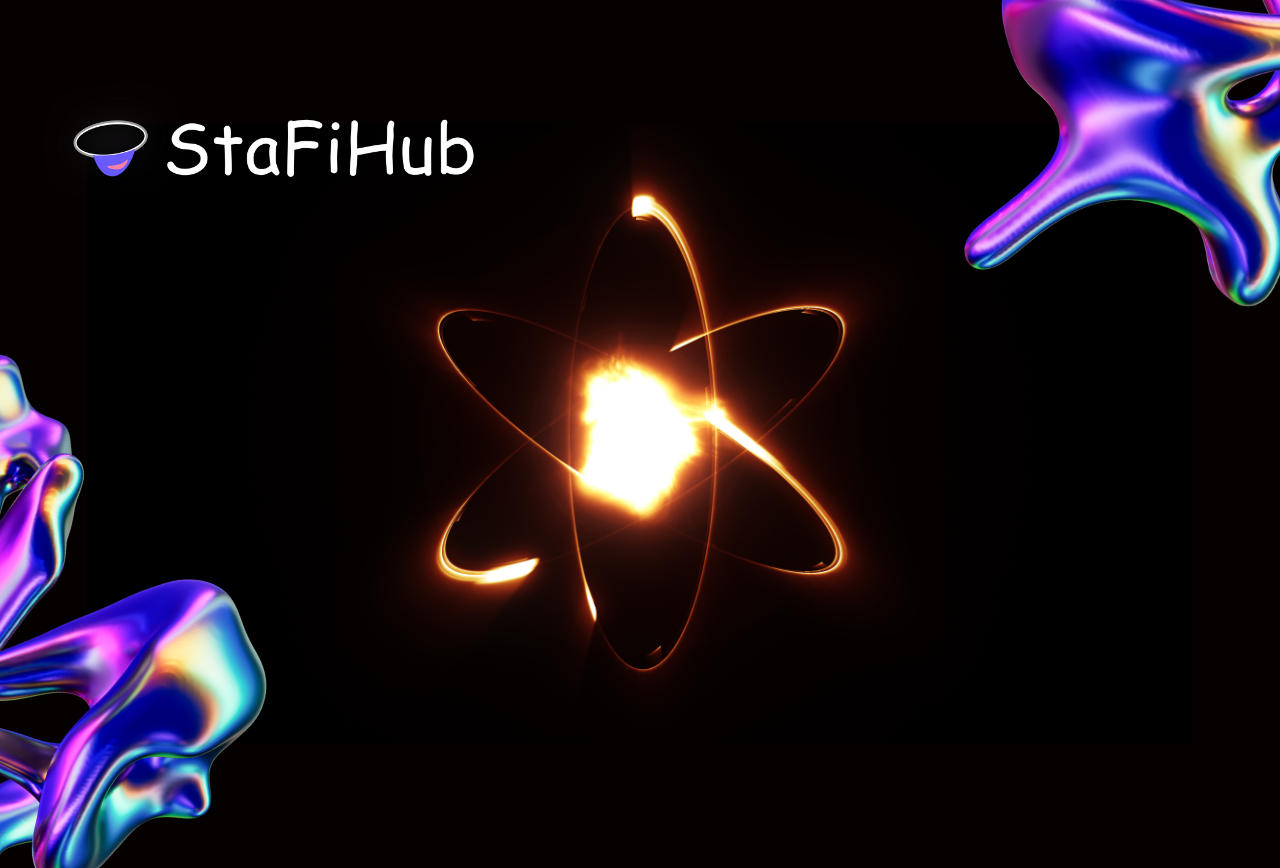
StaFiHub – The Future of Liquid Staking in the Cosmos Ecosystem
Cosmos is a popular blockchain known for a very different approach to solving the ‘hardest problems’ of the blockchain industry. The whitepaper of Cosmos was published in 2016 and ATOM, the native token of Cosmos, was launched in the following year. The network was envisioned as the ‘internet of blockchains’ by its founders and an interoperable platform of open-source blockchains was successfully created down the line. Cosmos can be considered an ecosystem of blockchains that can scale and interoperate with each other. Achieving interoperability was always a challenging task for blockchain developers and Cosmos was the first platform to enable interoperability between different chains. The decentralized network of independent parallel blockchains in the Cosmos ecosystem is powered by BFT consensus algorithms like Tendermint consensus. The connection between blockchains is achieved through the Inter-Blockchain Communication protocol (IBC). IBC leverages the instant finality property of Tendermint consensus to allow heterogeneous chains to transfer value to each other. It also opens up a plethora of opportunities for the ecosystem. StaFiHub is a new Cross-Chain Staking Derivatives Platform on the Cosmos ecosystem that aims to provide liquid staking solutions for assets through IBC Protocol to rapidly grow the staking industry.
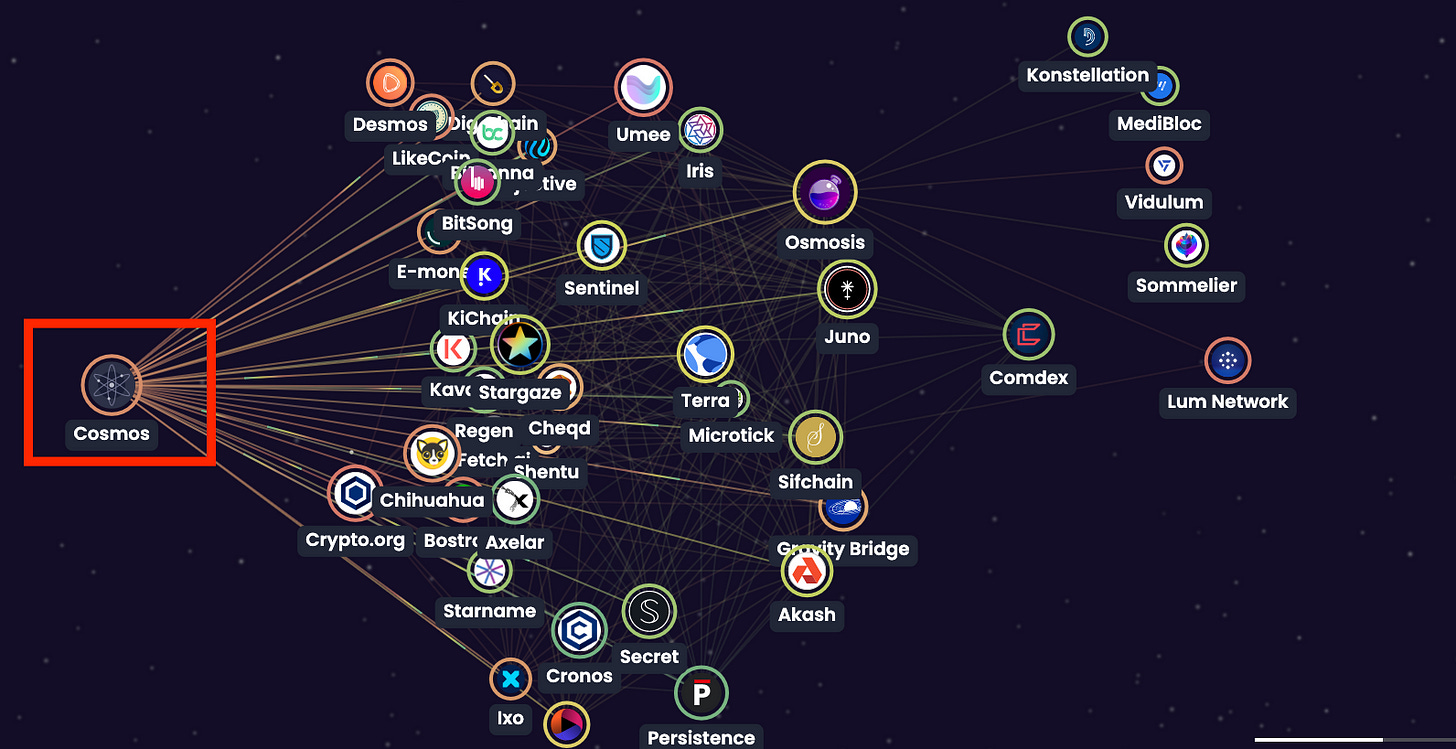
Cosmos is a proof-of-stake (PoS) blockchain. Staking ATOM in the Cosmos Hub provides economic security for the blockchain. When you stake ATOM, it gives you the superpower to contribute to the security and governance of the Cosmos Hub. You also get attractive staking rewards. The rewards are generated and distributed to ATOM stakers in two ways - transaction fees collected on the Cosmos Hub and newly generated ATOM from inflation. Like Cosmos, the other blockchains of the Cosmos ecosystem are also PoS blockchains and it provides a great opportunity for the investors to generate a decent return on the investment. While staking is a proven method of earning rewards, it comes with certain limitations and risks. Running a validator node for staking involves technical knowledge and there are actual hardware and electricity costs. Staking nodes should have almost 100% uptime to maximise rewards. For a retail investor, it is not logical to run a validator node. The more logical method of staking is to choose a validator to stake with. In this case, the investor becomes a delegator. Validators on PoS blockchains verify transactions to make sure that they are accurate and valid and then add them to the chain. If the validators misbehave or incur downtime, they are punished by the network. This is called ‘Slashing’. When a validator is slashed, both the delegator and the validator face a penalty. For Cosmos chains, such penalties range from 0.01% for a validator’s liveness slash to 5% for a validator committing a double sign event on the blockchain.
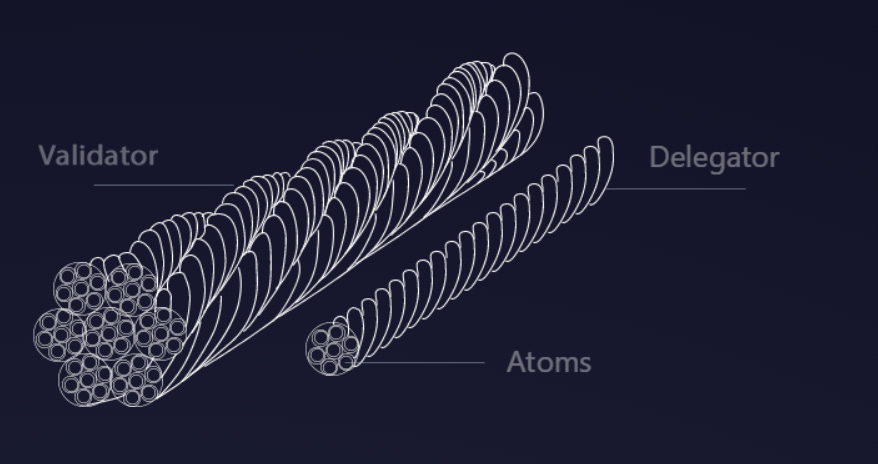
It is very important to select a good validator while delegating your staked tokens. Before choosing a validator, a lot of factors should be considered – for example, validator uptime, activity history, the reputation of the validator, validator commission etc. This again can be a cumbersome task for a retail investor. Staking has another big limitation. The stakers are required to lock their assets within PoS protocols and that makes the assets illiquid (for example ATOM has unbonding time of 21 days). It is really a big disadvantage of staking if we compare it with yield-generating opportunities in DeFi. This is the reason, ‘liquid staking’ evolved as an alternative to traditional crypto staking. This new mechanism allows tokenization of the staking positions and provides liquidity to the staked assets that can then be utilized across all DeFi platforms. StaFiHub, built using Cosmos-SDK, offers liquid staking for the Cosmos ecosystem so that the stakers can now pursue additional yield opportunities while maintaining the core positions of their staked assets. The user-friendly front end of StaFiHub allows any investor to take part in liquid staking of ATOM, IRIS, HUAHUA at present. The tokens can be deposited via IBC in a secured manner for staking.
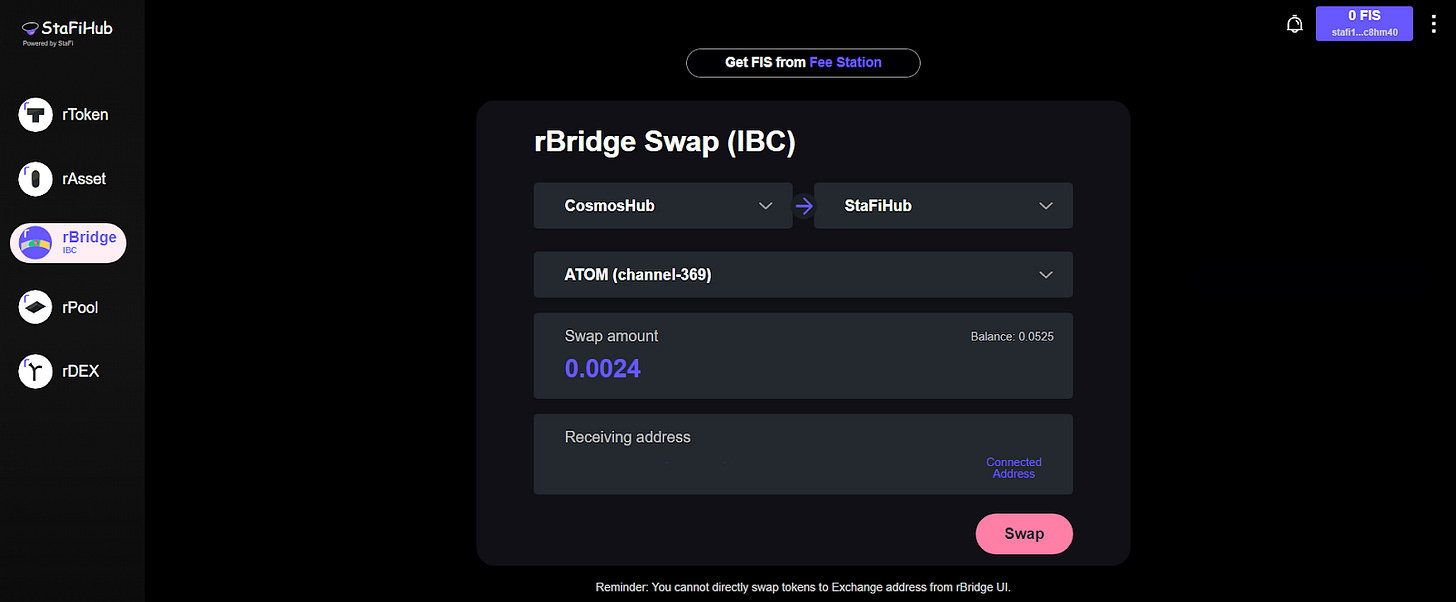
StaFi is a project that wants to offer next-generational staking for the masses. Here, the rTokens act as a voucher token that represents your staked assets and staking rewards attached. The entire ecosystem of StaFi is built surrounding rTokens enabling liquid staking to function. These rTokens are yield-generating, reward-bearing, tradeable, non-custodial, redeemable, fungible and fractional. StaFiHub is a parallel chain dedicated to the Cosmos ecosystem developed by StaFi. The chain is similar to Osmosis, Sifchain or Terra but the validator system is not yet open. Till now, validators are nominated by the StaFi Foundation. It is basically an application chain serving the Cosmos ecosystem Staking Derivatives. Cosmos is gaining traction in the blockchain developer community fast and there are already 40+ Cosmos SDK projects. StaFiHub wants to onboard all such projects and offer liquid staking to all participants. The team wants to build a cross-chain bridge down the line for the seamless transfer of rTokens between StaFiHub and StaFi Chain. FIS is the multi-chain utility and governance token of the StaFi ecosystem. FIS prevents system abuse and validators on StaFiHub need to stake FIS to join the consensus and obtain rewards.

You can connect to StaFiHub through Keplr wallet. The project has already brought in 3 rTokens – rATOM, rIRIS, rHUAHUA. These tokens can be used to provide liquidity on rDEX and they are tradeable. StaFiHub’s native token FIS and rTokens are transferrable to other Cosmos ecosystem chains via IBC. FIS is used to pay the transaction cost for all transactions. The project is providing the First Staking Derivative SDK to the developers and it will enable any Cosmos-SDK based project to develop its own staking derivative within a short span of time easily. Any Cosmos-SDK project can integrate with StaFiHub to get its own liquid staking derivatives in two ways:
Integrating with Interchain Accounts (ICA): This is the decentralized way. It enables the chain security to maintain rToken among Cosmos-SDK based projects.
Integrating with Multisig Accounts: Some projects haven’t enabled ICA yet. For them, the integration can be done with multisig accounts.
Both integration methods are cyclical in nature and all transactions included in a cycle are completed on the pool accounts. A big difference is that the transactions on the Multisig Account pool are completed by the relay whereas the transactions on the ICA Pool are completed by the StaFiHub.
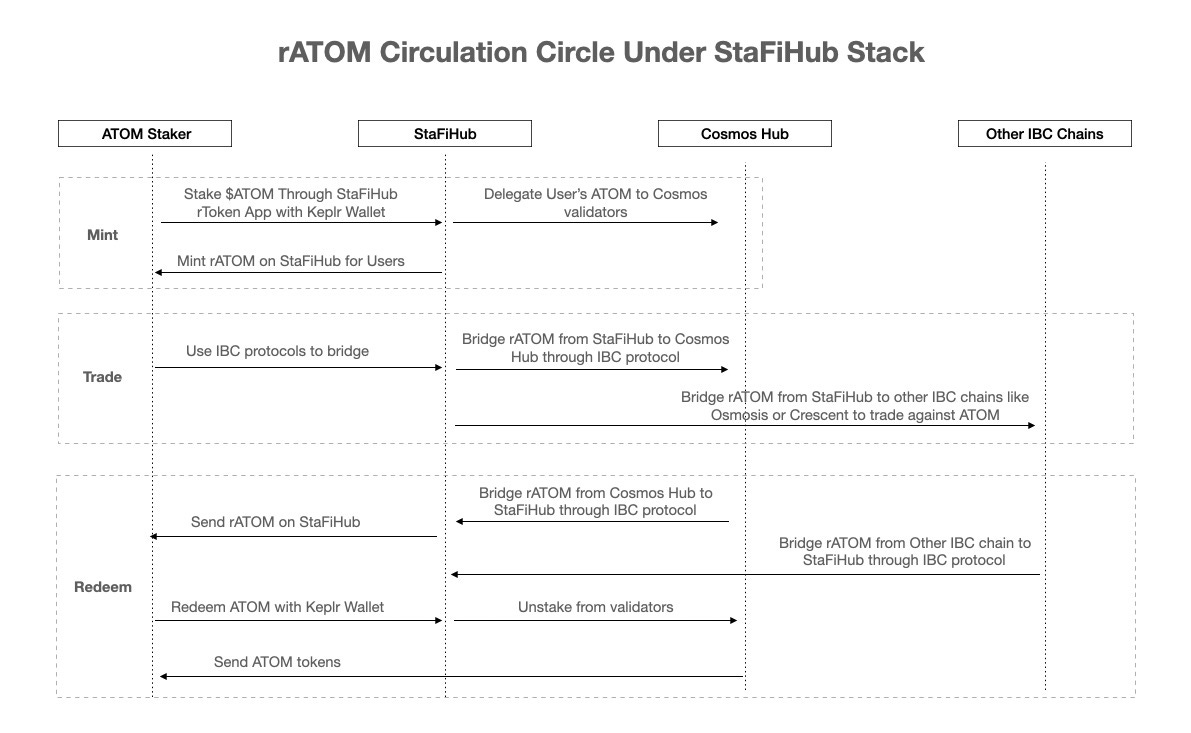
For a liquid staking project, the delegation strategy must be chosen wisely. StaFiHub’s delegation strategy focuses on three principles – maximising staking returns, minimising potential losses, and decentralising the delegations to avoid centralising voting power. These three principles are matched with the delegation algorithm for the rTokens issued on StaFiHub. The rToken solution’s delegation algorithm on StaFiHub will be implemented stage-wise – V1 and V1. V1 is based on a simplified design vision. The method is based on scanning the on-chain performance of all validators and selecting validators based on criteria like – slash record, delegation amount, staking returns, voting power etc. Finally, the method ends up selecting the best validators to delegate from all the validators groups on the target chain keeping in mind the decentralization of voting power. Validator Rotation Mechanism is implemented that includes temporary rotation and regular rotation. The project is still working with V2 and it will include many results and process parameters into the algorithm to achieve smarter evaluations of the target chain’s validator performance. Different weights will be assigned to different parameters to obtain a scoring of all validators to judge the performance on the target chain.
Any Cosmos project can use the liquid staking facility of StaFiHub. If they want to use StaFiHub Liquid Staking SDK to develop their own liquid staking derivatives, they just need to run the relayer nodes for the multi-sign address which receives the funds from the stakers. The process is so easy and hassle-free. StaFiHub is a new project and rTokens may face liquidity issues. This is the reason the StaFi team has launched an Initial Liquidity Grant Program (ILG Program) that will provide excellent rewards to initial rToken liquidity providers on StaFiHub. To provide early liquidity, the project is inviting the Foundation of Target Projects (FOTP) in the Cosmos ecosystem. This is really a win-win solution for both parties as FOTP can increase the staking ratio of their respective networks and utilise their treasury meaningfully while receiving a part of the protocol fee of StaFiHub. On the other hand, StaFiHub gets the desired liquidity for kickstarting the platform. StaFiHub seems to be determined to bring a lot of innovations in liquid staking and the project wants to be community-centric. StaFi Protocol, presently managed by the StaFi Core team is slowly transitioning towards a DAO model. The path to achieving complete decentralization is not going to be very easy considering the multi-appchain nature of StaFi but the project is making noteworthy progress rapidly. Liquid staking has already found product-market fit in the crypto ecosystem. In the recent bear market, only the liquid staking segment of DeFi has registered growth. StaFiHub can do the magic to the Cosmos ecosystem just like Lido did to Ethereum!
Follow StaFiHub on Twitter to get regular updates and join their vibrant Discord.
The article was first published here.
Follow Me
👉 Twitter @paragism_

